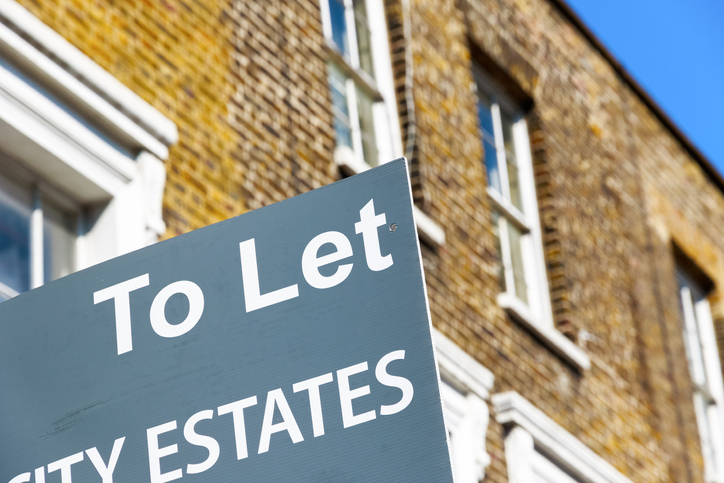Buy to Let Mortgages
Buy to Let Financing
Buy to Let mortgages are tailored for investors seeking to purchase properties specifically for renting out to tenants. This financing option empowers investors to build a portfolio of properties that can provide a steady stream of rental income while potentially benefiting from the property’s value appreciation over time.

Expert Buy to Let Guidance
Navigating the dynamic landscape of property investment requires expert insights. Our experienced mortgage advisors bring a wealth of knowledge specific to the UK market. From understanding market trends to staying updated on regulations and tax implications, we’re here to ensure you’re well-informed at every step.
Tailored Mortgage Solutions
No two property investors are alike. Whether you’re a first-time landlord or an experienced investor, we take the time to understand your objectives. Our bespoke mortgage offerings are designed to enhance rental yields, facilitate portfolio expansion, or optimise financing structures, all while fitting your unique financial situation.


Extensive Lender Network for Exclusive Deals
Our extensive network of lenders sets us apart. We maintain strong relationships with a diverse range of financial institutions, including both mainstream banks and specialised buy to let providers. This network allows us to access exclusive deals and competitive interest rates that might not be available elsewhere. With our connections, you have a higher chance of securing a mortgage that offers value and flexibility.
Streamlined Application Process
We value your time and understand the urgency of property transactions. Our buy to let mortgage service takes a streamlined approach to the application process, reducing unnecessary paperwork and ensuring efficiency. We work diligently to expedite your mortgage approval, helping you transition from property search to ownership sooner. Your investment journey is our priority, and we’re committed to making it as smooth as possible.
Buy to Let Mortgage FAQs
A buy to let mortgage is tailored for investors looking to buy residential properties for renting to tenants. Unlike traditional home mortgages, these are designed to match the needs of property investment.
With buy to let mortgages, you borrow funds to purchase properties with the aim of generating rental income. This income covers mortgage payments and potentially leads to profit. Lenders factor in potential rental income and your finances to decide on terms.
Deposits are usually higher, ranging from 25% to 40%. Costs like maintenance and insurance need consideration.
Buy to let offers a chance to build a property portfolio and profit from rent and property value growth. However, research and advice are crucial before diving into property investment.
The amount you can borrow with a buy to let mortgage depends on several factors, including the potential rental income of the property, your own financial circumstances and the lending criteria of the specific lender you’re working with. Typically, lenders calculate the maximum loan amount based on a rent-to-mortgage ratio, ensuring that the potential rental income is sufficient to cover the mortgage repayments.
As a general guideline, lenders often require the rental income to be around 125% to 165% of the mortgage payments. This means that the monthly rental income should exceed the mortgage payment by a certain margin to account for potential vacancies, maintenance costs, and other expenses.
Additionally, lenders may consider your personal income, credit history, and existing financial commitments when determining how much you can borrow. They may also factor in the type of property you’re investing in and its location.
To get an accurate estimate of how much you can borrow with a buy to let mortgage, we assess your individual situation and provide you with a clearer picture of your borrowing capacity based on their specific lending criteria.
Yes, buy to let mortgages differ from residential mortgages. Buy to let mortgages are for investors who rent out properties, while residential mortgages are for homeowners. Buy to let mortgages use potential rental income to assess affordability, need a larger deposit (25-40%), and might have higher interest rates due to higher risk. Residential mortgages are for personal use, use personal income for affordability, require smaller deposits (5-20%), and usually have lower interest rates. Tax and regulations also vary between the two.
Eligibility criteria for a buy to let mortgage vary among lenders, but common factors include –
Rental Income: Lenders typically require the potential rental income to cover a certain percentage (e.g., 125%) of the mortgage payments.
Deposit: A higher deposit, often around 25-40% of the property’s value, is usually required compared to residential mortgages.
Credit History: A good credit history demonstrates your ability to manage debt responsibly.
Affordability: Lenders assess your ability to afford the mortgage, considering your personal income and financial commitments.
Experience: Some lenders may require you to have prior landlord experience, especially for larger property portfolios.
Property Type: The property’s condition, location, and potential rental demand are factors lenders consider.
Age: Lenders might have age limits for applicants, ensuring the mortgage is repaid before retirement.
Regulations: You need to comply with relevant legal and regulatory requirements for rental properties.
Nationality/Residency: Some lenders have restrictions based on your nationality or residency status.
Remember, each lender’s criteria may differ, so it’s crucial to consult with your mortgage adviser to understand your eligibility before applying.
The required deposit for a Buy-to-Let mortgage typically ranges from 25% to 40% of the property’s value. This is higher compared to residential mortgages, where deposits can start at around 5% to 20% of the property’s value.
The specific deposit percentage can vary based on several factors:
Lender’s Policy: Different lenders have varying deposit requirements based on their risk tolerance and lending policies.
Property Type: The type of property you’re investing in can influence the deposit amount. Some lenders might require a higher deposit for certain property types or locations.
Borrower’s Profile: Your financial situation, credit history, and experience as a landlord can also impact the deposit requirement.
Loan Amount: In some cases, the size of the loan you’re applying for might affect the deposit percentage.
Rental Income: Lenders may consider the potential rental income when determining the deposit requirement.
Market Conditions: Economic conditions and the lending landscape might influence deposit requirements.
It’s important to note that a higher deposit can lower your loan-to-value (LTV) ratio, which could potentially result in more favourable interest rates and terms. However, the higher deposit requirement also means a larger upfront investment on your part.
When considering a Buy-to-Let investment, it’s recommended to consult with mortgage adviser to understand the specific deposit requirement based on your circumstances and the current lending market conditions.
Yes, using rental income to cover mortgage repayments is a key characteristic of Buy-to-Let mortgages. One of the unique features of a Buy-to-Let mortgage is that lenders often assess the affordability of the mortgage based on the potential rental income from the property, rather than solely relying on the borrower’s personal income.
Here’s how it typically works –
Rent-to-Mortgage Ratio: Lenders usually require the potential rental income to exceed a certain percentage (often around 125% to 165%) of the mortgage payments. This ensures that even if there are periods of vacancy or unexpected expenses, the rental income should be sufficient to cover the mortgage.
Assessment of Affordability: When evaluating your application, lenders calculate whether the rental income meets their required ratio compared to the mortgage payments. This assessment helps them determine if the property is likely to generate enough income to support the mortgage.
Property’s Rental Potential: The rental potential of the property, based on factors like location, property type, and local rental market conditions, plays a significant role in this assessment.
It’s important to note that while rental income is a primary consideration, lenders may still consider your personal income and financial situation when assessing your eligibility for a Buy-to-Let mortgage. Additionally, having a property management plan and considering potential expenses like maintenance and property management fees are essential for a successful Buy-to-Let investment.
Ultimately, using rental income to cover mortgage repayments is a fundamental concept of Buy-to-Let mortgages, making them a distinct option for property investors seeking to generate income from their investment properties.
Buy-to-Let investments come with several tax implications in the UK. It’s important to be aware of these considerations to make informed financial decisions. Here are some key tax implications to consider:
Income Tax on Rental Earnings: The rental income you earn from your Buy-to-Let property is subject to income tax. You’ll need to declare this income on your Self Assessment tax return. Income tax rates vary based on your overall income and tax band.
Wear and Tear Allowance: Previously, there was a Wear and Tear Allowance that allowed landlords to deduct a standard percentage of their rental income for maintenance and repairs. However, this allowance was replaced with a system allowing landlords to claim for actual costs incurred.
Mortgage Interest Tax Relief Changes: Changes have been implemented to mortgage interest tax relief. Instead of deducting mortgage interest from rental income before calculating tax, a basic rate tax credit is now applied. This change has been phased in over several years, and by 2020, the full impact was realised.
Stamp Duty Land Tax (SDLT): When you purchase a Buy-to-Let property, you may need to pay higher rates of Stamp Duty compared to residential properties. Additional SDLT applies to second homes and investment properties.
Capital Gains Tax (CGT): If you sell a Buy-to-Let property and it has appreciated in value, you may be liable to pay Capital Gains Tax on the profit. However, you might be eligible for certain exemptions or reliefs, such as Principal Private Residence Relief, Lettings Relief, and the annual CGT exemption.
Inheritance Tax (IHT): Buy-to-Let properties are typically included in your estate for Inheritance Tax purposes. This means that their value could be subject to IHT upon your passing, depending on the total value of your estate.
VAT Considerations: If you earn over a certain threshold from renting property, you might need to register for VAT and charge VAT on your rental income. However, most residential property rentals are exempt from VAT.
These tax implications are subject to change based on government policies and regulations. It’s recommended to consult with a tax professional or financial advisor who specialises in property taxation to ensure you’re fully aware of your tax obligations and can plan your Buy-to-Let investment accordingly.
Yes, it’s possible to switch your residential mortgage to a Buy-to-Let mortgage, but there are important considerations to keep in mind. Here’s what you need to know:
1. Consent from the Lender: Before making the switch, you generally need to obtain consent from your current residential mortgage lender. Some lenders might have specific terms that allow or disallow such a switch. They might also have specific conditions for granting consent.
2. Change in Use: Converting your property from residential use to a Buy-to-Let investment involves a change in use. This could impact the terms of your mortgage, as Buy-to-Let mortgages usually have different interest rates, fees, and deposit requirements.
3. Affordability Assessment: Lenders assess affordability differently for Buy-to-Let mortgages, often using the potential rental income to determine if you can cover the mortgage payments.
4. Interest Rates: Interest rates on Buy-to-Let mortgages might differ from those on residential mortgages. They could be slightly higher due to the perceived increased risk of investment properties.
5. Tax Implications: Switching to a Buy-to-Let mortgage might have tax implications. For instance, if you’ve been benefiting from Principal Private Residence Relief for Capital Gains Tax, converting the property to a Buy-to-Let might affect your eligibility for this relief in the future.
6. Insurance and Consent to Let: You might need to adjust your property insurance to reflect its new use as a rental property. Additionally, if you decide to let the property, you’ll need to inform your residential lender or obtain consent to let it out.
7. Early Repayment Charges: If your current residential mortgage has early repayment charges, switching to a Buy-to-Let mortgage might trigger these charges. It’s important to factor in these costs when making your decision.
Before proceeding with switching your mortgage, it’s highly advisable to seek advice from a mortgage advisor or financial professional who can guide you through the process. They can help you assess the financial implications, understand the requirements of your current lender, explore alternative financing options, and make an informed decision based on your circumstances and investment goals.
Applying for a Buy to Let mortgage involves several steps that are similar to applying for other types of mortgages. Here’s a general overview of the process:
Initial Chat
Discuss your plans: Give us a call or email us to schedule a call to initially talk through your plans and what you are looking to do.
Documentation Gathering
Prepare documents: Once we’ve had a discussion and what you are looking to do seems feasible and we’ve provided an idea of product interest rates, we will email you our documents to complete and a list of documents to provide.
Research and Preparation
Research lenders: Once we have received our completed documents and requested documents, we will research lenders that offer serviced accommodation mortgages and provide you with the cheapest product options you and the property are eligible for.
Decision in Principle and Mortgage Application
Once a product has been selected e.g. a 2- or 5-year fix product, we will submit the Decision in Principle and Mortgage Application.
Underwriting and Approval
Underwriting process: The lender’s underwriting team will assess your application and verify the provided information.
Property Valuation
Valuation assessment: The lenders will value the property and assess its suitability considering factors like location, size and condition.
Rental Income Valuation
Rental assessment: The lender will also value the projected rental income of the Buy to Let property, considering the condition of the property, local rental market, and other factors.
Offer and Terms
Mortgage offer: If your application is approved, the lender will provide a formal mortgage offer outlining the terms, conditions, interest rates, and fees.
Legal and Regulatory Checks
Legal and regulatory review: Your solicitor or conveyancer will review the property’s legal title, ensuring there are no issues that could affect the mortgage or property ownership.
Completion
Legal: Your solicitor will coordinate the completion process. It’s important to note that the process can vary depending on the lender, your location, and individual circumstances. Working with a knowledgeable mortgage broker can streamline the process, ensure you meet all requirements, and help you find the best Portfolio Buy to Let mortgage for your investment goals.
We are highly experienced so do not hesitate to give us a call to talk through your plans.
Reviews
Much more than just a mortgage broker
Specialist Advisers
We only deal with property finance and don’t dilute our service and skills by being a jack of all trades.
Customer Care
We pride ourselves on the extremely efficient but very personal service we provide our clients.
Time Saving
We have created systems that mean you can get on with your life and let us do what we do best.
Confidentiality
We take client confidentiality seriously and our systems protect your data in line with current regulations.